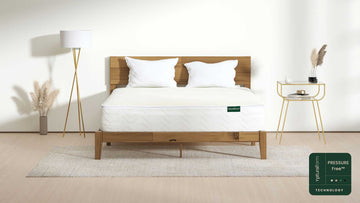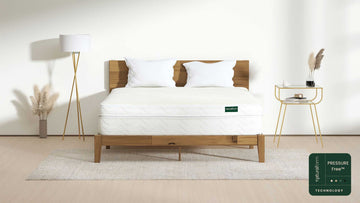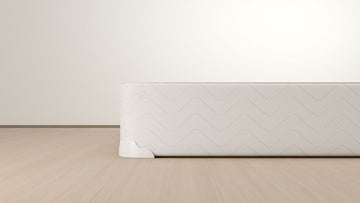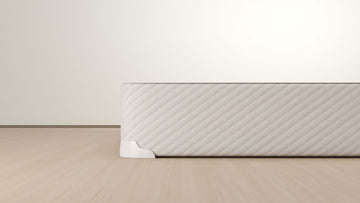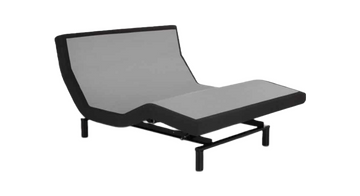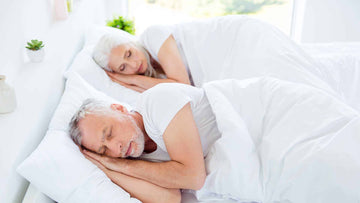Back Pain & Sleep
Approximately 80% of adults have to deal with back pain at one point or another of their life. It’s a common symptom of nerve and muscular concerns, spinal stenosis, arthritis, and degenerative disc disease, amongst other conditions. As a result, back pain is the most common contributing factor in both sick days taken from work and job-related disability.
The sheer variety of potential causes is one of the reasons that back pain is as common as it is. Chronic back pain can result from lifestyle factors, such as obesity, while it can also be caused by physical injuries like accidents and muscle strains. A lack of sleep has also been shown to greatly exacerbate or cause back pain.
Despite the wide range of causes, treatment tends to be much more consistent. Changes to the diet and lifestyle, medication learning how to manage the symptoms, physical therapy, and sometimes surgery are most often recommended.
When it comes to the treatment of back pain, sleep plays a significant role. A lack of sleep can cause or exacerbate back pain, to begin with. Back pain can interrupt and prevent sleep, however, leading to a vicious cycle where pain and sleeplessness continue to contribute to one another. A new mattress might just be the best way to break that cycle.
What type of mattress is best for back pain?
Air mattress
One of the biggest benefits of an air mattress is that you adjust the firmness levels on either side of the mattress. This allows you to alter how soft or firm it feels, but that’s not all. The latest models use modern tech that uses air chambers, allowing pressure on the body to be relieved. Most commonly used for medical purposes, it’s largely considered the best choice when selecting a mattress for Back Pain, Degenerative Disc Disease, Hip Bursitis, Arthritis, & more.
Memory foam mattress
One of the biggest benefits of an air mattress is that you adjust the firmness levels on either side of the mattress. This allows you to alter how soft or firm it feels, but that’s not all. The latest models use modern tech that uses air chambers, allowing pressure on the body to be relieved. Most commonly used for medical purposes, it’s largely considered the best choice when selecting a mattress for Back Pain, Degenerative Disc Disease, Hip Bursitis, Arthritis, & more.
Memory foam mattress
One of the most popular modern mattress designs, memory foam is designed to do exactly as described. Ultimately you can sink into this mattress, so it perfectly hugs your form. It can even adapt to different shapes and temperatures while also being great for people who suffer from allergies. Reducing pressure on joints or muscles, the sinking design can also help people maintain the correct posture and sleep straight.
Latex mattress
Filled with foam, these mattresses are breathable, so they are perfect if you have allergies, asthma or issues with overheating. These mattresses are durable too and are great if you need solid support for your back. However, like the pocket spring mattress, they are also heavy enough that turning is difficult.
Pocket spring / hybrid mattress
This is a more advanced spring mattress and can once again be suitable for a wide range of different individuals. You can get a pocket spring mattress designed for a range of different needs including medium, firm or soft varieties. The design of this mattress also ensures that they are breathable, ideal for hot summer evenings. You will however, have trouble turning these mattresses due to the weight, and they are often filled with natural materials. Worried about weight issues?
Open spring mattress
This is a budget-friendly choice that could certainly provide a fantastic bed for the kids or even guests, but may not be something that you want as your main mattress. Often known as a continuous-coil or even an open-coil mattress, they have a clever design. The metal pieces are coiled into springs while there is also a rod/wire to make sure that they stay the right shape. They’re even easy to turn over when necessary.
How back pain prevents sleep
It’s not difficult to imagine that severe pain can get in the way of sleep. However, even those with somewhat lighter kinds of back pain can find a lot of trouble settling in for the night. This is, in part, due to the increased awareness of pain. When you’re in bed at night, you don’t have as many stimuli distracting you from the pain. Because there is no distraction, you become more aware of the pain, which can make it feel worse.
What’s more, back pain and sleeping position are very much interlinked. As your experiences of back pain worsen, you may not be able to sleep comfortably in the same position you once could and might have to try a variety of positions. Lying in new positions, however, can be awkward and uncomfortable, to begin with, preventing sleep as you try to get used to it.
Other lifestyle factors related to back pain can play role. Back pain can make it hard to engage in physical exercise, which also leads to trouble with sleep. Medication that has been prescribed as a treatment for back pain might also be a factor. Pain management medication, such as opioids, can negatively impact sleep, such as causing sleep apnea.
